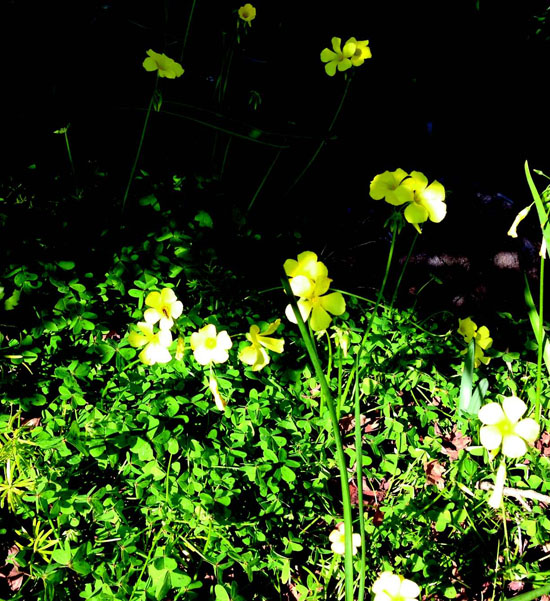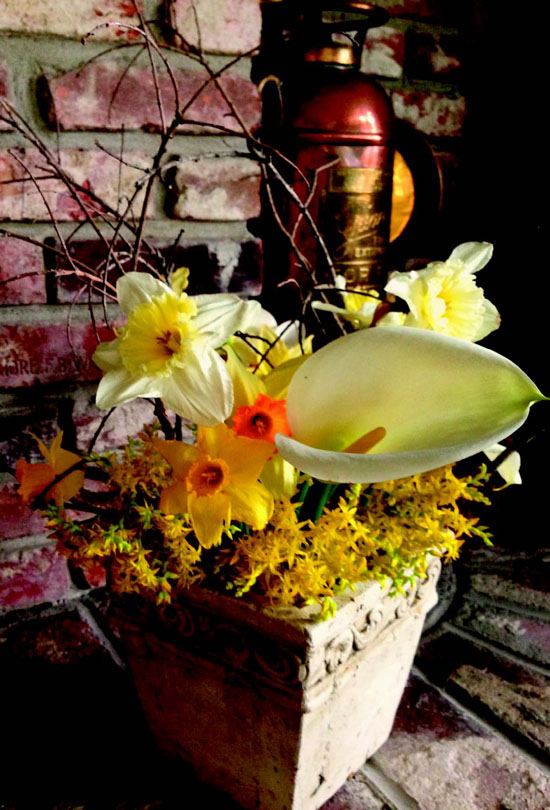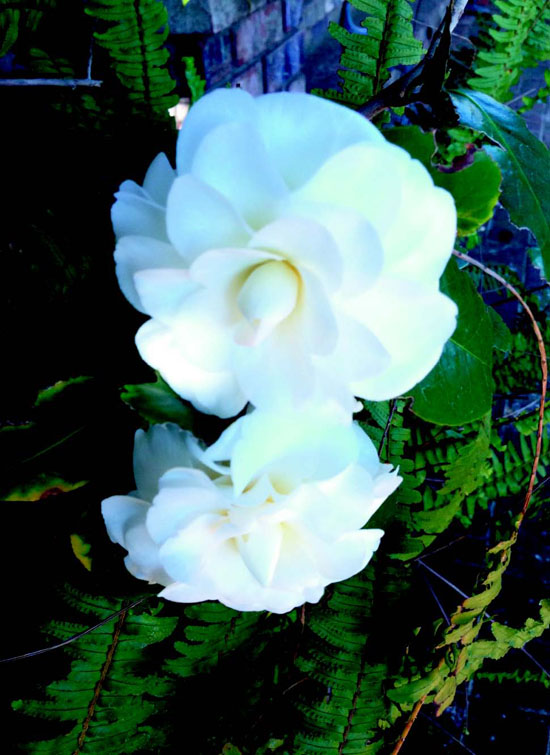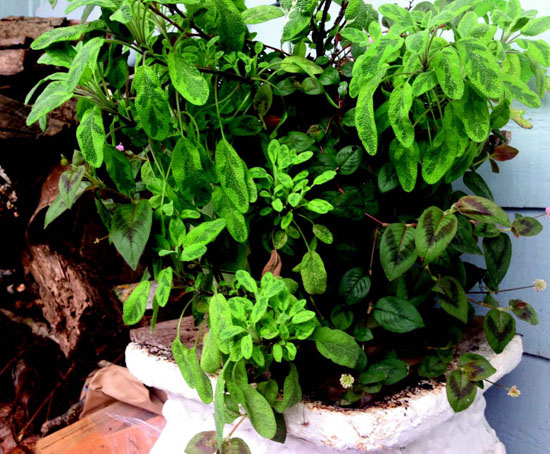 |
|
|
Yellow oxalis is also known as shamrock, perfect for St. Patrick's Day. Photos Cynthia Brian
|
|
|
|
|
|
"Conservation is a state of harmony between men and land." ~ Aldo Leopold
 Sunshine and patchy clouds. Mostly sunny and very warm. Cloudy with rain possible. If you are like me, you are checking the online weather channels to determine when our gardens will be getting a shower. Unfortunately the weather predictions are not accurate. The conversations around the water cooler as well as at the dinner table revolve more and more about the weather than anything else. While we see stories on the news of "the worst winter in Boston," California is facing the driest three-year period in California history, stretching back to the Gold Rush in 1850. Sunshine and patchy clouds. Mostly sunny and very warm. Cloudy with rain possible. If you are like me, you are checking the online weather channels to determine when our gardens will be getting a shower. Unfortunately the weather predictions are not accurate. The conversations around the water cooler as well as at the dinner table revolve more and more about the weather than anything else. While we see stories on the news of "the worst winter in Boston," California is facing the driest three-year period in California history, stretching back to the Gold Rush in 1850.
 Farmers throughout California indicate their livelihoods are at stake, with their needed water levels cut by nearly 25 percent. Snowfall in the Sierras is at dismal levels. Beyond California, the world is suffering from global droughts affecting over 2 billion people. Public awareness of the importance of conservation is an issue that can't be watered down. Farmers throughout California indicate their livelihoods are at stake, with their needed water levels cut by nearly 25 percent. Snowfall in the Sierras is at dismal levels. Beyond California, the world is suffering from global droughts affecting over 2 billion people. Public awareness of the importance of conservation is an issue that can't be watered down.
 With spring just a few days away, and our weather totally incomprehensible, gardeners need to be vigilante and diligent when it comes to the needs of our landscape. You can conserve water while protecting the environment and your pocketbook by following a few of this month's tips: With spring just a few days away, and our weather totally incomprehensible, gardeners need to be vigilante and diligent when it comes to the needs of our landscape. You can conserve water while protecting the environment and your pocketbook by following a few of this month's tips:
 COMPOST your scraps, leaves, grass clippings, newspaper, eggshells, coffee grounds, tea leaves and other organic materials. Keep your pile or bin wet, turn often, and be ready to reap rich matter to add to your garden. COMPOST your scraps, leaves, grass clippings, newspaper, eggshells, coffee grounds, tea leaves and other organic materials. Keep your pile or bin wet, turn often, and be ready to reap rich matter to add to your garden.
 MULCH, mulch, mulch. I know I sound like a broken record, but by providing that extra three or four inches of top dressing in your garden, you are protecting your plants from heat, frost, and other weather conditions, conserving water, adding to the texture and absorption of the soil, and keeping erosion at bay. MULCH, mulch, mulch. I know I sound like a broken record, but by providing that extra three or four inches of top dressing in your garden, you are protecting your plants from heat, frost, and other weather conditions, conserving water, adding to the texture and absorption of the soil, and keeping erosion at bay.
 GROW your own fruits, vegetables and herbs. You know what you put into your soil. You reap the nutritional benefits. You have control over water, fertilizer and attraction of beneficial insects. Thyme, sage, oregano and rosemary are all easy to grow in the ground or in pots adding perennial goodness to savory dishes. GROW your own fruits, vegetables and herbs. You know what you put into your soil. You reap the nutritional benefits. You have control over water, fertilizer and attraction of beneficial insects. Thyme, sage, oregano and rosemary are all easy to grow in the ground or in pots adding perennial goodness to savory dishes.
 START seedlings in half an orange or grapefruit after pulp has been removed. Put a hole in the bottom and when the seedling is large enough, plant the entire rind in the garden. START seedlings in half an orange or grapefruit after pulp has been removed. Put a hole in the bottom and when the seedling is large enough, plant the entire rind in the garden.
 INCREASE magnesium and sulfate in your garden by sprinkling Epson Salt around plantings. INCREASE magnesium and sulfate in your garden by sprinkling Epson Salt around plantings.
 RID walkways and paths of weeds with a homemade brew of weed killer. Mix one gallon of white vinegar with one cup of table salt and one tablespoon of Dawn liquid dish soap. Use as a spray when the sun is shining. Do not use around lawns or flowerbeds. RID walkways and paths of weeds with a homemade brew of weed killer. Mix one gallon of white vinegar with one cup of table salt and one tablespoon of Dawn liquid dish soap. Use as a spray when the sun is shining. Do not use around lawns or flowerbeds.
 CUT the neck off a large soda bottle and place over small pots planted with seeds to act as a mini greenhouse, eliminating the need for watering. CUT the neck off a large soda bottle and place over small pots planted with seeds to act as a mini greenhouse, eliminating the need for watering.
 CLEAN bird feeders and birdbaths with a solution of soap, water and bleach. Allow thorough drying before refilling to ward off avian diseases. CLEAN bird feeders and birdbaths with a solution of soap, water and bleach. Allow thorough drying before refilling to ward off avian diseases.
 ALLOW moles to live in your landscape as garden helpers who eat snail larvae, grubs and harmful insects while they aerate the dirt. ALLOW moles to live in your landscape as garden helpers who eat snail larvae, grubs and harmful insects while they aerate the dirt.
 DIG out dandelions with the root attached. Use the leaves and flowers in salads and tea. Roast the root with a few drops of olive oil. Dandelion is a detoxifier, helping our liver and digestive system. DIG out dandelions with the root attached. Use the leaves and flowers in salads and tea. Roast the root with a few drops of olive oil. Dandelion is a detoxifier, helping our liver and digestive system.
 FERTILIZE lawns before or during a rain to increase root production, eliminate weeds, and add an emerald luster to your grass. If rainfall is not in the forecast, you will need to turn on your sprinklers. Choose a cool day to feed, water deeply, then infrequently thereafter. FERTILIZE lawns before or during a rain to increase root production, eliminate weeds, and add an emerald luster to your grass. If rainfall is not in the forecast, you will need to turn on your sprinklers. Choose a cool day to feed, water deeply, then infrequently thereafter.
 SPRUCE up the patio furniture before spring has sprung. Use the weekend to get your lounge chairs ready for relaxation and outdoor fun. SPRUCE up the patio furniture before spring has sprung. Use the weekend to get your lounge chairs ready for relaxation and outdoor fun.
 INSPECT irrigation pipes and sprinkler systems for leaks. A small drip can equal a loss of 50 gallons a month while a steady drip could equate to more than 2,500 gallons of wasted water. INSPECT irrigation pipes and sprinkler systems for leaks. A small drip can equal a loss of 50 gallons a month while a steady drip could equate to more than 2,500 gallons of wasted water.
 REPLACE washers in hoses as they deteriorate over time. If you are still getting a spray from the faucet connection, replace the coupling. REPLACE washers in hoses as they deteriorate over time. If you are still getting a spray from the faucet connection, replace the coupling.
 REPAIR and sharpen gardening tools, including lawn mowers, shredders and shears. REPAIR and sharpen gardening tools, including lawn mowers, shredders and shears.
 PLANT gaillardia, the National Garden Bureau plant of 2015. The majority of the 23 species are perennial. The common name is "blanket flower," named after a talented Native American weaver whose grave was "blanketed" with colorful flowers mimicking the intricate blankets she wove. PLANT gaillardia, the National Garden Bureau plant of 2015. The majority of the 23 species are perennial. The common name is "blanket flower," named after a talented Native American weaver whose grave was "blanketed" with colorful flowers mimicking the intricate blankets she wove.
 IMPROVE air quality with sansevieria, commonly called snake plant, and also known as mother-in-law's tongue. Snake plant is one of the best pollution filtering plants. It grows in low light and loves humidity. IMPROVE air quality with sansevieria, commonly called snake plant, and also known as mother-in-law's tongue. Snake plant is one of the best pollution filtering plants. It grows in low light and loves humidity.
 USHER in spring with an attractive arrangement of calla lilies and a variety of daffodils scattered amidst yellow succulent blooms. USHER in spring with an attractive arrangement of calla lilies and a variety of daffodils scattered amidst yellow succulent blooms.
 CELEBRATE St. Patrick's Day with a container of oxalis, also known as shamrocks. CELEBRATE St. Patrick's Day with a container of oxalis, also known as shamrocks.
 ENJOY the blooms of camellias, azaleas, tulips, bearded iris, and numerous annuals this month as they exhibit their cavalcade of colors. ENJOY the blooms of camellias, azaleas, tulips, bearded iris, and numerous annuals this month as they exhibit their cavalcade of colors.
 WELCOME the equinox, a celebration of equal hours of day and night, by dancing, singing and frolicking in the ferns. (Okay, frolic where you wish!) WELCOME the equinox, a celebration of equal hours of day and night, by dancing, singing and frolicking in the ferns. (Okay, frolic where you wish!)
 Wishing you the luck of the Irish and a harmonic vernal rebirth. Do your part to conserve our natural resources. Wishing you the luck of the Irish and a harmonic vernal rebirth. Do your part to conserve our natural resources.
 Happy Gardening and Happy Growing! Happy Gardening and Happy Growing!

|




